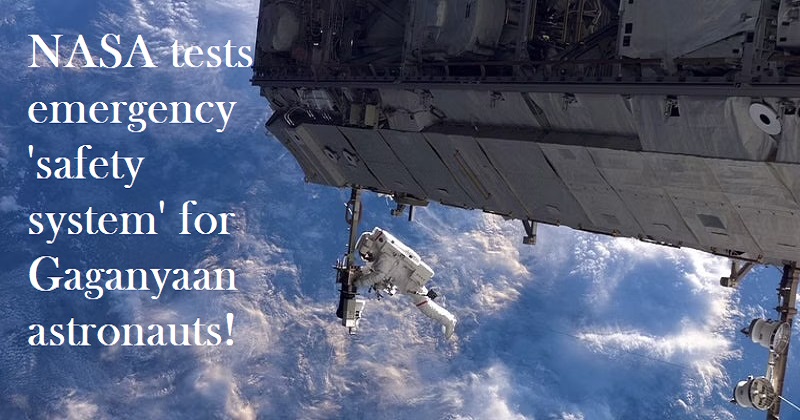
The Indian Space Research Organisation has successfully tested the Low Altitude Escape Motor, which will power the Crew Escape System, which will eject the Gaganyaan crew module with astronauts in the event of an emergency. If an emergency occurs during the initial phase of the flight, the emergency system will detach the crew module from the launch vehicle.
On Wednesday, the Indian space agency tested the Low Altitude Escape Motor at Sriharikota and stated that the Crew Escape System (CES) removes the Crew module of the Gaganyaan mission in the event of an emergency and rescues the astronauts. ‘In the event of a mission abort during the initial phase of flight, LEM provides the necessary thrust to CES to remove the Crew Module from the launch vehicle, ‘Isro said in a statement.
The LEM is a special-purpose solid rocket motor with four reverse flow nozzles that produce a maximum sea level thrust of 842 kN (nominal) and a burn time of 5.98 seconds (nominal). To prevent exhaust plumes from filling the crew module and suffocating the astronauts, the nozzle end of the motor is mounted at the fore end of the launch vehicle rather than the aft end in conventional rocket motors.
‘This necessitates the use of a reverse flow of multiple nozzles in this solid rocket motor. The reverse flow nozzle denotes the reversal of the exhaust gas flow direction in the nozzle region ‘,Isro added. The test was carried out to evaluate motor ballistic parameters, validate motor subsystem performance, confirm design margins, evaluate the thermal performance of nozzle liners, validate the integrity of all interfaces, evaluate the performance of the head-end mounted safe arm (HMSA) based ignition system, and evaluate side thrust due to misalignment and variation in flow and other functional parameters including flow reversal.
The Gaganyaan mission, which was supposed to conduct the first uncrewed mission this year, has been pushed back to 2023 as Isro continues to perfect the systems and has stated that it will not take any chances because this is India’s first attempt to send humans into space.
However, the Indian space agency has stated that it will conduct two unmanned abort missions in which the spacecraft will be launched to a height of 15 kilometres and Isro will simulate an abort scenario in which the crew capsule will return to Earth via parachutes. According to Isro chief S Somnath, their first priority is human safety, and they will be simulating failures and bringing the crew back safely under those circumstances.

Post Your Comments